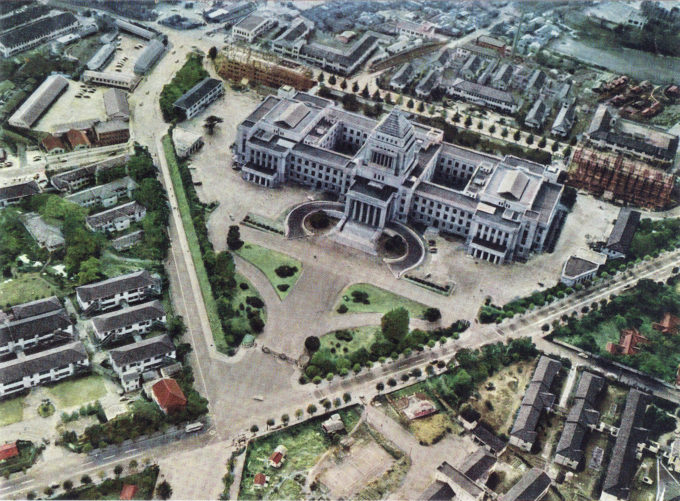“Under the terms of surrender that ended World War II, Japan fell under Allied Occupation [from 1945-1952]. U.S. Army engineers faced a daunting challenge in constructing facilities for the Occupation forces and rebuilding the defeated country’s infrastructure.
“… While Allied Occupation forces in Japan were self-sustaining in regard to food, clothing, ammunition, and other essential supplies, they had to procure lodging and office space, certain communication facilities, construction supplies, and labor from the local economy. At first American area commanders kept projects moving by levying requisitions on local Japanese governments.
“A linchpin of the U.S. reconstruction effort in Japan was a base-building program to construct facilities supporting the Occupation forces. While in the early part of the Occupation the U.S. military engaged in or supervised the Japanese in humanitarian and other relief-related civilian activities, the bulk of the engineering projects it performed involved converting existing facilities for the Eighth Army and other military units.
“Engineers provided housing, hospitals, airfields, and administrative and operational structures to American garrison divisions by rehabilitating former Imperial Army military camps. They also converted Japanese housing units and built new ones to provide 15,000 residential units for lodging the American military and their dependents.”
– Military Reconstruction in Japan, U.S. Army Corps of Engineers, 2003
See also:
Olympic Village née “Washington Heights” US Military Housing Complex, Tokyo, 1964.
Yuraka Building, Yurakacho, Tokyo, c. 1930.
Post-war Housing Construction (danchi), c. 1960.
“In the fall of 1945, GHQ ordered the Tokyo Metropolitan Government to collect the locations and floor plans of all structurally-sound Western-style residences with at least six rooms, located within a 45-minute drive of the Imperial Palace … Residents were given the week to evacuate with orders to leave all of the furniture behind.
“Following a thorough cleaning, the Japanese government had to stock each house with linens, silverware, and ‘all other appointments and furnishings suitable for an [Occupation] officer.”
– Cartographic Japan: A History in Maps, edited by Karen Wigen, Sugimoto Fumiko & Cary Karacas, 2016


